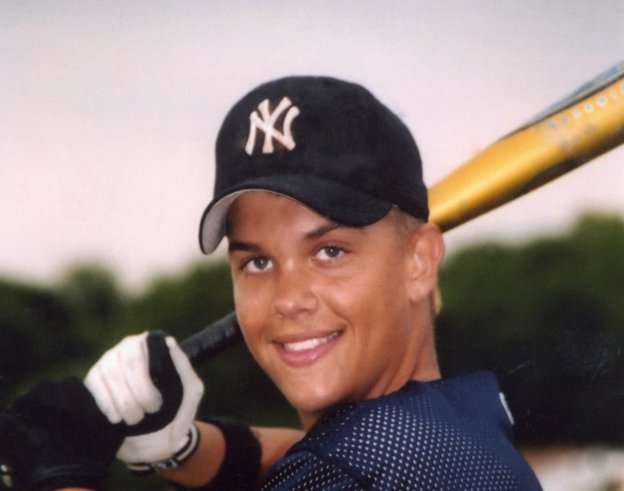Some medical doctors may be perfectly good doctors in most every regard. But when it comes to treating anabolic steroid users, their competence may not be up to speed. It may not be entirely their fault. It is unlikely they were taught how to treat steroid users while they were in medical school. They may have learned little more than ‘steroids are bad’ and ‘patients should stop using steroids’. Nonetheless, these otherwise good doctors who are uninformed and ignorant regarding anabolic steroids should be avoided. They are ‘bad doctors’ as far as the steroid user is concerned.
Dr. Babette Farkas, M.D. was the psychiatrist that treated the late Taylor Hooton. Farkas diagnosed Hooton with major depression and discovered that the 17-year old high school baseball player was stacking an injectable steroid with an oral steroid. The steroid stack consisted of Anadrol (oxymetholone) and Deca Durabolin (nandrolone decanoate).
“Major depression. At that point in time, I’d actually took a detailed interview and found out that he was using anabolic steroids,” said Farkas.
Farkas knew that anabolic steroids would have suppressed Taylor’s natural production of testosterone. Anabolic steroid induced hypogonadism (ASIH) is a side effect that is well-documented in the medical literature. Anecdotally, the suppression of the HPTA axis is thought to be even more severe with the use of long-acting esters of nandrolone (which was one of the steroids used by Taylor).
Farkas also knew that the discontinuation of steroids could cause Taylor to experience all the symptoms of low testosterone associated with ASIH. This could very well mean that Taylor, who was already clinically diagnosed with major depression, could see his depression become much worse.
Nonetheless, Farkas decided the best course of action was to make Taylor quit steroids “cold turkey” without any form of ASIH treatment. She did not monitor hormone levels or HPTA function. There was no indication that Farkas was even aware of the existence of ASIH treatment. She certainly didn’t notify Taylor’s parents of this option. Instead, Farkas told Taylor to quit and prescribed the SSRI anti-depressant Lexapro (escitalopram) to him and took a “watchful waiting” approach.
“I put him on Lexapro in low dose, knowing that there was the depression from the steroid use as well as the probability that, as he came off of them, he was going to be even more depressed, in a child who had some self-esteem issues and some self-confidence issues,” said Farkas. “He had quit the steroids, to my knowledge. And that’s what he reported.”
A few weeks later, Taylor Hooton committed suicide on July 15, 2003. The official cause of death was determined to be suicide by hanging. But no one really blamed major depression or hanging for Taylor’s death. Taylor became known around the country as the kid who died from taking steroids.
Dr. Farkas was one of the first to blame steroids for both Taylor’s major depression and also his death. Never mind the fact that Taylor had a family history of depression, that his mother had been treated for major depression and that his sister had previously attempted suicide. Did Farkas believe steroids were responsible?
“Yes. No doubt in my mind,” said Farkas.
The narrative became the official story told by the Taylor Hooton Foundation (THF), a non-profit organization created to raise awareness about teen steroid use and presumably to prevent young people from using the muscle-building hormones. Steroids caused Taylor’s depression. The discontinuation of steroids made his depression worse. Therefore, anabolic steroids were singled out for blame.
The glaring omission from the THF narrative is the fact that the medical community and Dr. Farkas failed to offer Taylor the appropriate medical treatment for ASIH. Farkas’ decision to force Taylor to stop steroids cold turkey while neglecting to offer medical treatment for his ASIH was the worst thing she could have done for him.
It’s not enough to tell kids that steroids are bad or that they need to stop using steroids. The young people using steroids need to be told how to discontinue them under the appropriate medical supervision in a manner that addresses the potential side effects and seeks to minimize harm. They need to be offered ASIH treatment following the discontinuation of steroids.
The death of Taylor Hooton could have been a pivotal point in the history of steroid education. It could have brought unprecedented awareness to the concept of anabolic steroid harm reduction as well as the medical treatments available for ASIH.
Unfortunately, the Taylor Hooton Foundation (THF) has squandered an incredible opportunity to promote ASIH treatment and other harm reduction techniques for anabolic steroid users. Instead, it has promoted failed high school drug testing policies; it has become a cheerleader for the government’s war on steroids; it has joined the anti-doping movement’s fight against performance-enhancing drugs (PEDs) in sports, and; it has become a part of Major League Baseball’s public relations efforts to appear tough on steroids.
The promotion of steroid harm reduction initiatives such as ASIH treatment have been notably absent and surprisingly so given the circumstances leading up to Taylor’s death.
Farkas may have been a good psychiatrist but she was a bad doctor for a steroid using patient due to her ignorance of and failure to administer ASIH treatment.
If you are the parents of a child who is suspected of using anabolic steroids, avoid medical doctors like Dr. Farkas who promote “watchful waiting” and seek a medical professional that will provide evidence-based medical treatment for ASIH.

